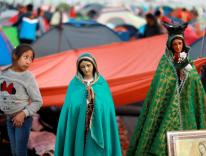The rainbow and God’s promise to Noah must be of scant comfort to the thousands in England, hundreds of thousands in North Korea, and millions in India who are living through floods as personally devastating as the one from which Noah was protected. Indeed, here in India, where in some areas floods are now a way of life, the rainbow seems like a particularly cruel joke, coming as it does when the rain has stopped but the water remains.
In Bihar, floods are an annual event. Vast populations are forced to live on the narrow embankments that run parallel to rivers such as the Kosi (called the “River of Sorrow” by the British). At least 100,000 people are marooned as of this writing, many living a nightmare existence perched on rooftops or in trees. Dwell on that for a moment: How to ensure the safety of children who will continue to play regardless of danger? What about the elderly, the sick, the disabled? How to build a fire to cook meals? Where to defecate except in the water?
As Americans came to understand after Katrina, swimming to safety is only the first challenge in such a catastrophe. The next is dealing with the waterborne diseases that are the result of a contaminated supply. In India and other tropical countries, malaria is inevitable because standing water creates perfect breeding conditions for the mosquitoes that carry the disease.
We are in the middle of monsoon season right now-a period of heavy rains from June through September-and flooding is a common, and expected, occurrence. There are, in fact, farmers who welcome floods. As part of a natural cycle, floods carry silt from rivers to fields, increase moisture in the soil, and therefore increase the productivity of the land. Simple protective measures were once a feature of every low-lying area: villagers would settle on the highest ground available or build earthen mounds along the banks of the river, with breaks at regular intervals.
The mounds afforded some protection for village homes during the rainy season. They also allowed the waters to flow through the fields when the river ran high. Most important, this system allowed the waters to return to the river once the rains stopped. Traditional crops in such regions typically do well even in submerged conditions-one variety of rice in the Kosi River area has been known to grow more than ten feet high. The way of life in simpler societies was more or less in accord with nature. While flooding was always a disruption and often a calamity, it was seen and accepted as part of the cycle of life.
With increased modernization that began with the arrival of the British, several things changed in India. Mounds came to be seen as inadequate protection, so the gaps between them were filled to form continuous embankments. Other obstructions were added: rail lines, roads, and canals-all essential features of a modern society. And as population pressures increased, people settled in low-lying, flood-prone areas.
Such is the situation in Bihar today. The embankments that replaced the traditional mounds have made matters worse-when they break (as the levees did in New Orleans), the velocity and spread of the water released are far greater than they would be in a natural spillover. And because the waters continue to meet obstructions, such as roads, railways, and canals, the natural drainage pattern of the river is disturbed and it takes longer for the waters to recede when the rain stops. The true nature of flooding in Bihar cannot be measured simply by depth: duration must also be considered. Some areas of the state are flooded for almost the entire year.
Global warming is obviously one of the things people are talking about a lot here. This year’s rains, particularly in Bihar, have been intense. According to the Indian Meterological Department (IMD), however, the average annual rainfall across the country has remained fairly stable. But Madhavan Rajeevan, an IMD official, admits that “extreme rainfall events” (as the jargon goes) are now far more frequent.
Whether it is jargon or reality, global warming is really just another way of explaining our antagonistic approach to the natural world. A 102-year-old woman here in India once told me that all we need to do to solve our environmental problems is to live in harmony with the laws of nature. This is a woman who could run a household of ten on a few buckets of water, so she wasn’t being romantic. She lived in Delhi, where temperatures soar above 115 in the summer, and for much of her life she didn’t even have a fan. Heat is part of life. You accept it.
She knew, as most Indians do, that it isn’t possible to divert rivers, cut down forests, build superhighways, air-condition homes, and travel around the world on jets without paying a serious price. We think we are paying for it through taxes and utility bills and airline fares, but the true price comes in the earth’s outrage. We think we should never be inconvenienced, and that even an ordinary flood must be stopped. So of course we are shocked when the earth, prevented from doing what it naturally does, reacts in extraordinary ways.
Floods have traditionally been seen as acts of God. To those who think of him as vengeful and punishing, they are also a kind of divine retribution. Perhaps a better way to look at such events is in terms of acts and consequences. We make our choices and we must live with the results. If we want to enjoy the view of the rainbow from the safety of dry land, perhaps we should rethink how we live on the land the rest of the time.
Please email comments to [email protected] and join the conversation on our Facebook page.
Share
Previous Story
Gay Adoption; Vegetarianism
Next Story
'Crisis' Averted


